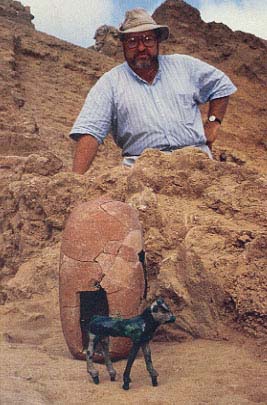Image Details

Carl Andrews, courtesy Leon Levy Expedition
The opening of the shrine is just wide enough for the calf to pass through. A clay door once covered the opening. The excavators believe the calf was displayed emerging from the shrine, much like the calf or bull depicted in the drawing on a second-millennium B.C. cylinder seal from Acemhöyük, in Anatolia (see illustration).
The Hebrew Bible is filled with invective against calf worship, most famously in the incident of the Golden Calf (Exodus 32). The prophet Hosea said derisively of the northern kingdom of Israel: “They offer human sacrifices and kiss calf images” (Hosea 13:2). The Canaanites associated calf or bull images with the worship of El or Baal, the most important deities in their pantheon of gods. Many scholars believe the Israelites emerged from Canaanite society a little before 1200 B.C.; scholars conjectute that the Israelites’ abhorrence of calf worship stems from their need to distance themselves from Canaanite religious practice.
